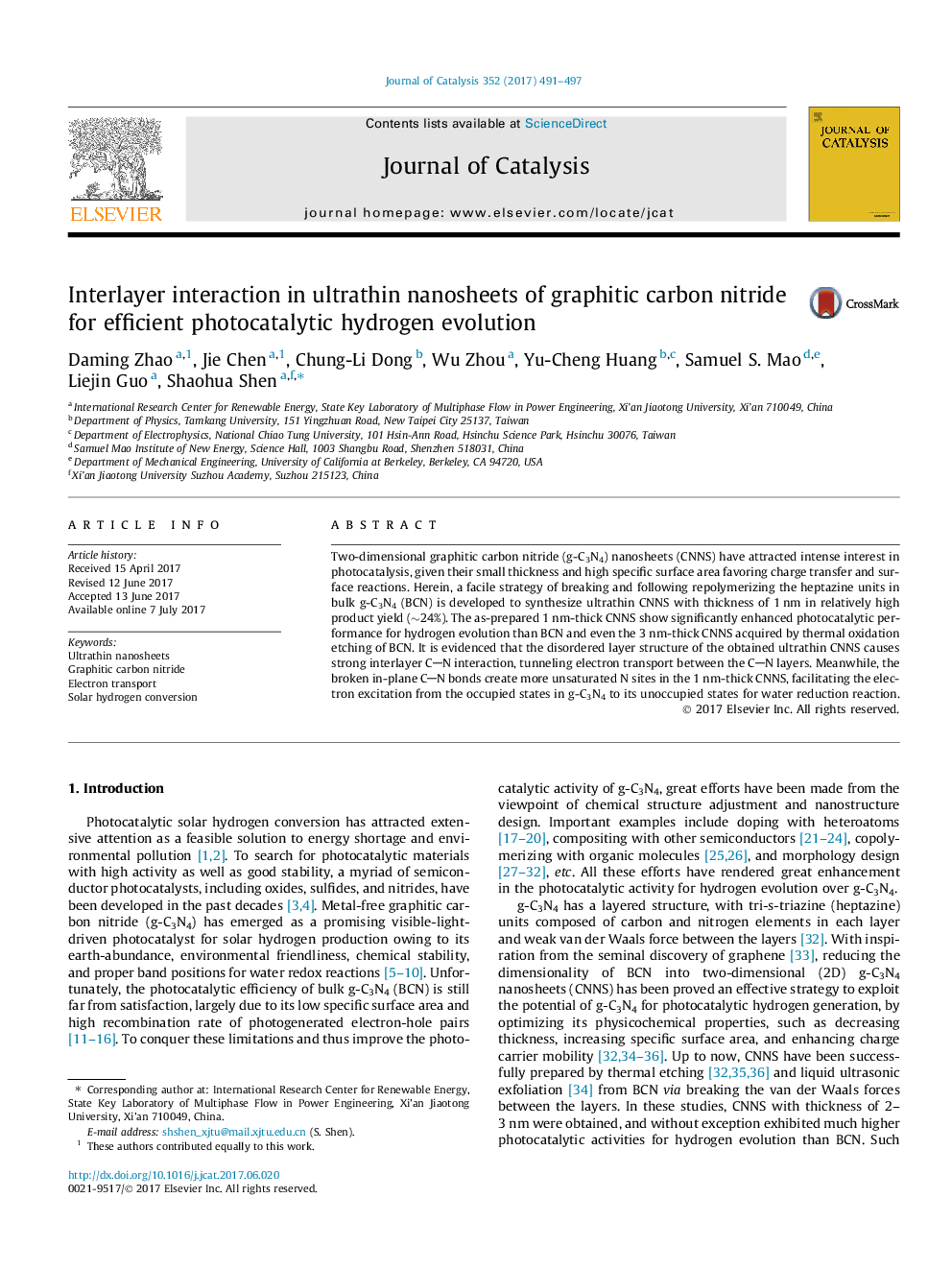| Article ID | Journal | Published Year | Pages | File Type |
|---|---|---|---|---|
| 6455439 | Journal of Catalysis | 2017 | 7 Pages |
â¢1 nm-thick ultrathin g-C3N4 nanosheets were synthesized in a high product yield.â¢The tunneled interlayers promoted electron transport between the CN layers.â¢The broken in-plane CN bonds created unsaturated N sites for electron excitation.â¢The obtained g-C3N4 nanosheets are among the most efficient nanostructured g-C3N4.
Two-dimensional graphitic carbon nitride (g-C3N4) nanosheets (CNNS) have attracted intense interest in photocatalysis, given their small thickness and high specific surface area favoring charge transfer and surface reactions. Herein, a facile strategy of breaking and following repolymerizing the heptazine units in bulk g-C3N4 (BCN) is developed to synthesize ultrathin CNNS with thickness of 1Â nm in relatively high product yield (â¼24%). The as-prepared 1Â nm-thick CNNS show significantly enhanced photocatalytic performance for hydrogen evolution than BCN and even the 3Â nm-thick CNNS acquired by thermal oxidation etching of BCN. It is evidenced that the disordered layer structure of the obtained ultrathin CNNS causes strong interlayer CN interaction, tunneling electron transport between the CN layers. Meanwhile, the broken in-plane CN bonds create more unsaturated N sites in the 1Â nm-thick CNNS, facilitating the electron excitation from the occupied states in g-C3N4 to its unoccupied states for water reduction reaction.
Graphical abstractDownload high-res image (122KB)Download full-size image
